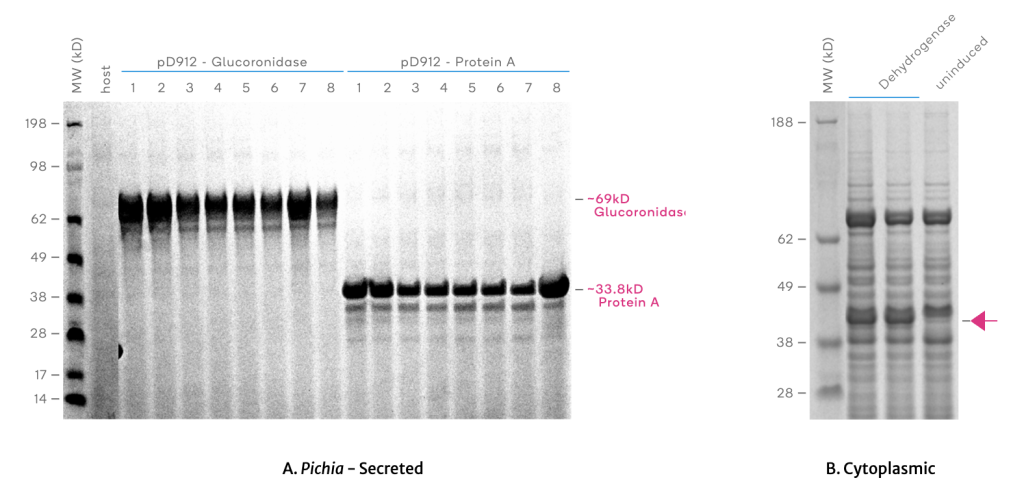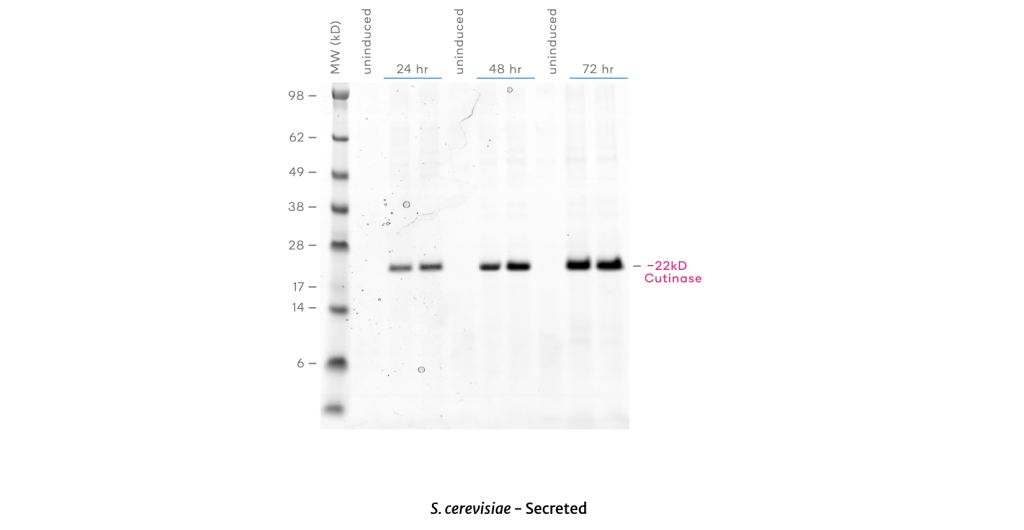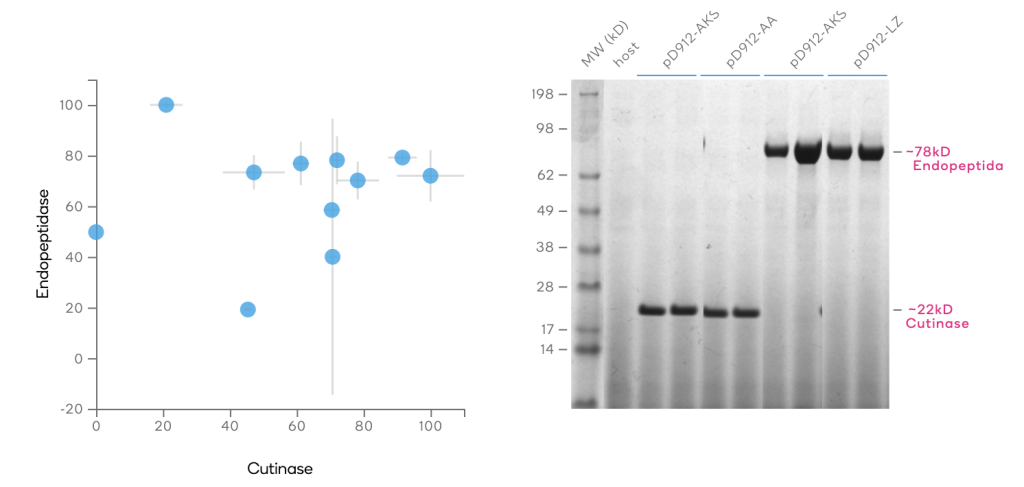Protein Expression in Yeast
Yeast can be used to express secreted and cytoplasmic proteins. The methylotrophic yeast Pichia pastoris is particularly advantageous for producing secreted proteins including those containing disulfide bonds. ATUM offers customized protein production services in P. pastoris strains, and in Saccharomyces cerevisiae, or we can provide vectors for yeast expression in your lab. The right vector elements make the difference between success and failure of a yeast expression project.
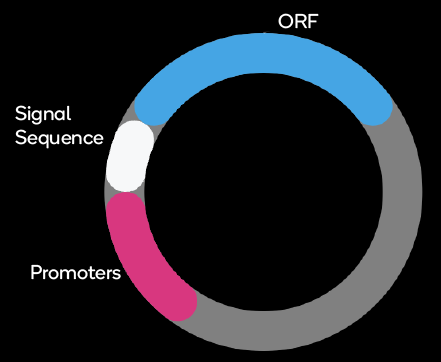
Vector Elements
Promoters
For P. pastoris, we favor the methanol-inducible AOX promoter for its high protein expression levels.
High protein expression with inducible AOX1 promoter in Pichia
Secreted Protein (panel A): Genes encoding glucoronidase and protein A underwent gene optimization using GeneGPS, and were synthesized and cloned into Pichia secretion vector pD912. Plasmids were transformed into Pichia strain PPS-9010 and plated onto YPD agar plates containing 300µg/ml Zeocin and incubated at 30°C for 3 days until colonies formed. 8 colonies were picked into liquid media, grown and induced with methanol for 2-4 days. Culture was removed, cells pelleted and approximately 15µl of the culture supernatant run on an SDS PAGE gel. Gel shows protein expression is consistent across different transformants. The gel also shows both the high yield of protein obtained and the lack of other host proteins secreted by this Pichia strain.
Cytoplasmic Protein (panel B): A gene encoding a dehydrogenase was optimized using GeneGPS, synthesized and cloned into Pichia cytoplasmic vector pD902. Pichia transformants were prepared, cultured and induced as described for secreted proteins. Cells were isolated from 0.5 ml culture by centrifugation, lysed in Yeast Busters reagent, mixed with 4X protein sample buffer and 5µl lysate was loaded on an SDS PAGE gel.
High protein expression with inducible GAL1 promoter in Saccharomyces
Signal Sequence
Pichia is an excellent secretor. The efficiency with which an individual protein can be secreted can be strongly influenced by the secretion signal sequence. ATUM’s panel of vectors allows eleven different signal sequences to be easily tested, ensuring that the best sequence can be readily identified. The graph below shows the impact of secretion signal choice on expression of two different secreted proteins in Pichia.
Pichia - Effectiveness of secretion signal is protein dependent
Secreted expression: Genes encoding cutinase and endopeptidase underwent gene optimization using GeneGPS,and were synthesized and cloned into Pichia vectors driven by a methanol inducible AOX1 promoter and various secretion signals. Pichia transformants were prepared, cultured and induced as described for Pichia secreted proteins under promoters above. Culture was removed, cells pelleted and approximately 15µl of the culture supernatant run on an SDS PAGE gel. Expression values shown on x- and y-axis are measurements of expressed protein band densities from a SDS-PAGE gel using BSA as standard. The highest cutinase expression was observed with either alpha-factor secretion signal (AKS) or alpha-Amylase (AA) while the highest endopeptidase expression was observed with Lysozyme(LZ) secretion signal. Gel shows expression levels range from 80 to 100 µg/ml for Cutinase and 80 to 200 µg/ml for Endopeptidase; grown in small batch cultures.
Open Reading Frame
As part of our customized protein services, we have developed GeneGPS® gene optimization algorithms to design genes for expression in both P. pastoris and in S. cerevisiae. The graphs below show that there is a strong correlation between the expression predicted by our expression model and that measured in the lab. The expression model underpins the GeneGPS codon optimization algorithm, and allows us to test possible designs computationally.
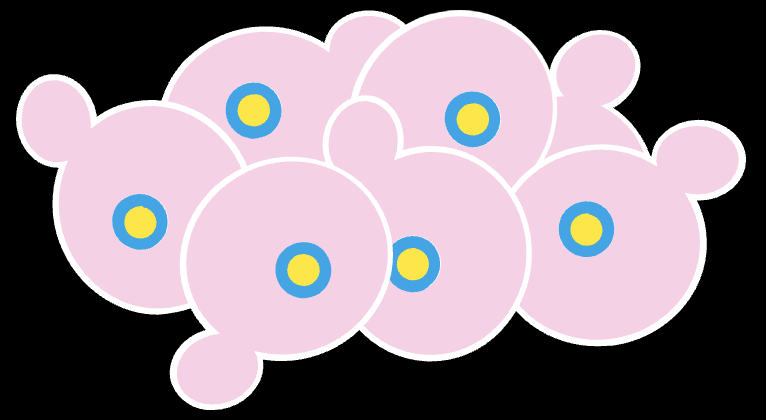
Strain Selection
The choice between P. pastoris or S. cerevisiae as an expression host depends upon the protein being expressed and its intended applications. Understanding the specific features of P. pastoris and S. cerevisiae is important in selecting the most appropriate host.
ATUM offers three P. pastoris expression strains that are fully compatible with all ATUM Pichia expression vectors. There are no licensing restrictions for your in-house use of the strains.
- PPS-9010 (BG10, wildtype): Pichia pastoris wild type expression strain.
- PPS-9011 (BG11, aox1Δ (MutS)): A slow methanol utilization derivative, useful for fermentation optimization studies.
- PPS-9016 (BG16, pep4Δ, prb1Δ): A protease-deficient strain.
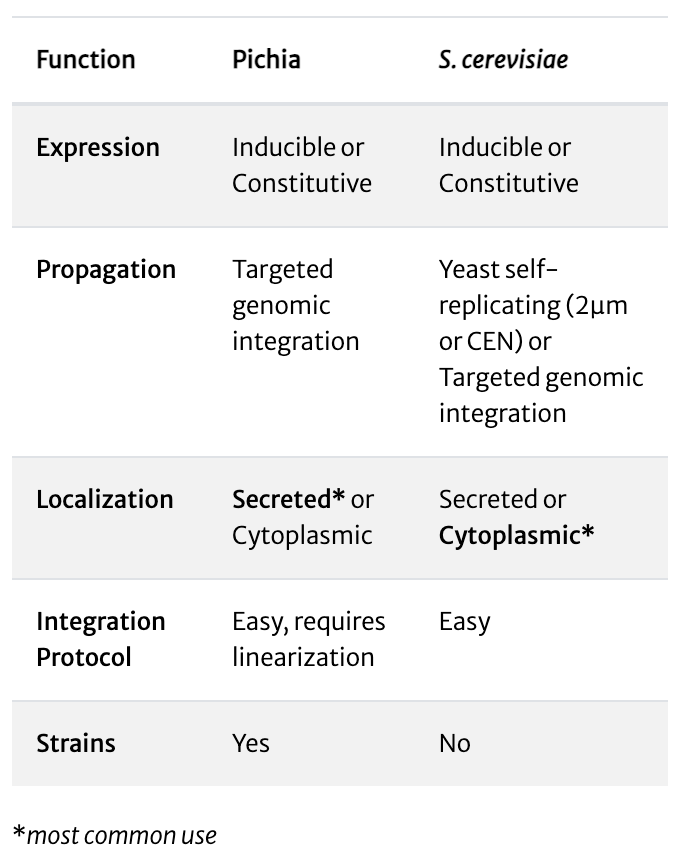
Protein Expression Optimization
In addition to vector elements and strain selection described above, ATUM further optimizes protein expression using a range of conditions including temperature, selection conditions and special media additives. ATUM also offers Expression test services to determine the best vector, growth, induction conditions and media additives for your protein.
